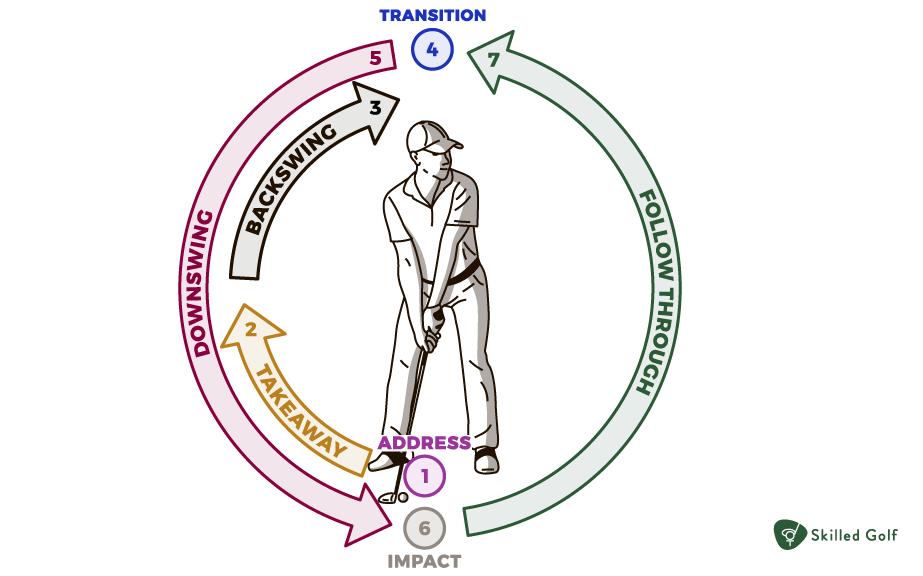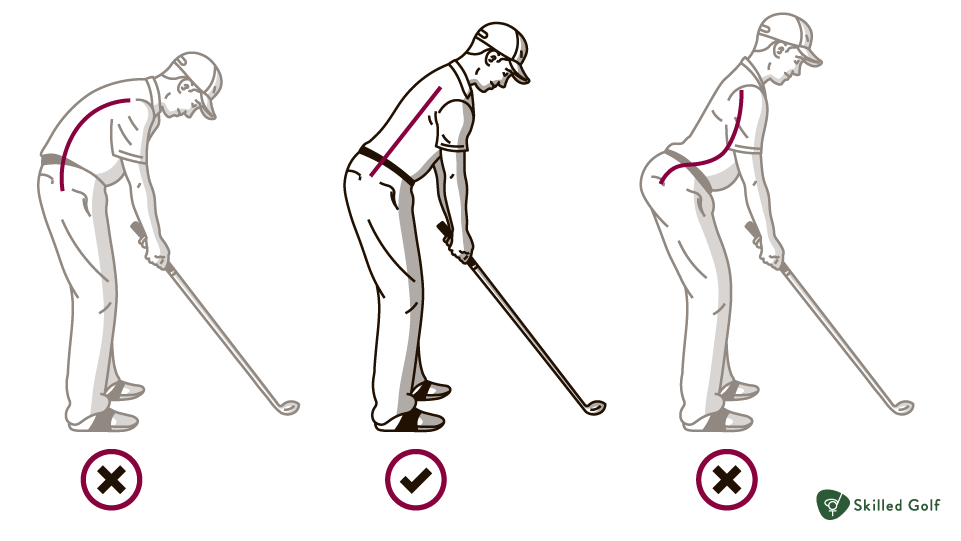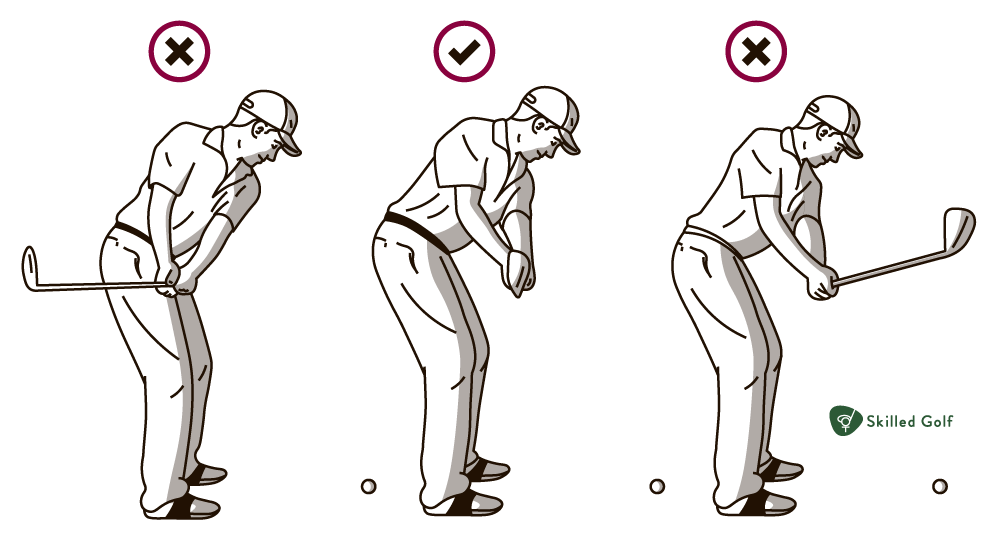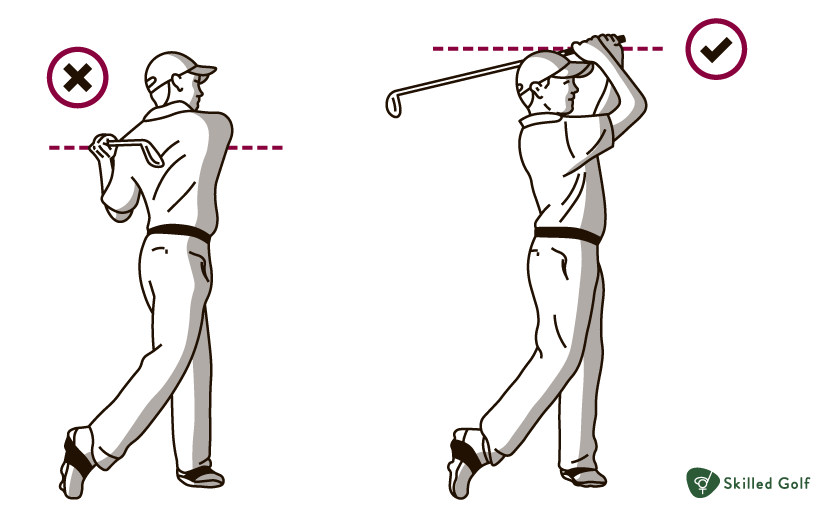Being an expert in the takeaway, or weight transfer, or shoulder turn is great, but eventually, you will have to put the entire swing sequence together.
A golf swing step by step guide is an excellent tool for the beginner golfer or the player that is looking to improve their golf game.
Having spent the majority of my life practicing and perfecting this golf swing sequence, I’m happy to share with you the best way to take the club from start to finish.
Here is everything you need to know about the proper golf swing sequence.

1. Setup and Address
The first step of the proper golf swing sequence is setup and address. Many golfers find this the most boring part of the game to practice, and they are not wrong!
However, it is also one of the most important parts of the game to work on. If your setup and address are wrong, you may as well forget taking the club back.
There are several important parts of the setup that need to be addressed.

Grip
Make sure that your hands are placed on the club in such a way that the club face is square and that your grip pressure is minimal.
The grip should mostly be in the fingers of your hand. When the grip of the club sits too far in the palms, the hands will get too involved in the golf swing.
Posture
When we talk about posture, we are mostly dealing with your spine angle. Make sure that you are not slouched over and that your head is held high at address.
Poor posture is going to lead to issues with balance and swing plane as well.
Stance
The stance is where your feet are located. Make sure that the feet are about shoulder width apart and a comfortable distance from the golf ball.
You should not be reaching for the ball or feeling as though you are too close. The stance will change a bit, depending on which club you are playing with.
Alignment
Lining up to your target takes a bit of learning. Since golfers don’t stand looking directly at the target when they swing, it takes a little while to learn about parallel alignment.
Your feet and ball position should be parallel, and the club face should be pointed down the target line.
Ball Position
The position of the ball in relation to your stance is an essential part of golf. Making sure the ball position matches the shot you are trying to hit and the stance that you have in place is very important.
Ball position with a driver will be more towards your left foot, and ball position for a wedge will be more towards the right foot.
2. Takeaway

Once your setup and address feels comfortable, you are ready to start the fun stuff, the takeaway.
The takeaway is the first few feet of the golf swing. This is when your body will start to turn and the club will start heading back on the proper line.
It is important to remember that during the takeaway, you are going to want to use your bigger muscles, not your hands and wrists. A proper takeaway will get you set up for the rest of your swing.
It is important to control the speed of your takeaway and make sure that it is one of the slower parts of your golf swing. If you rush the takeaway, you will end up getting the club in the wrong place right from the start.
3. Backswing
The takeaway is usually finished when the club is parallel to the ground or just before you get it to waist high. This is when the real backswing starts.
When you are working on the backswing you will want to make sure that your body is turning as well as your arm. It is the rotation of your shoulders and hips that will carry the club to the top of the backswing.
The top of the backswing is the position where the club is parallel to the ground. Some players will stop just short of this position, but most will want to get that parallel position.
At the top of the backswing, the club should also be pointed down the line to the target. If it comes across this line in any way, chances are the golf club is not on the proper plane.
Another key thing to look for in the backswing is where the arms are. Are they close to the body or are they sort of flailing and doing their own thing.
The best players on the PGA Tour will have the club extended but they will also make sure that the arms and the larger body muscles are working together during the backswing.
The backswing is still not the fastest part of the swing. As you may remember when we talked about the takeaway as part of the golf swing sequence, we mentioned that it should be rather slow.
The same holds true for the backswing, it is not worth rushing this part of the swing.
4. Transition
The transition is where the golf club changes from going up to going down. The transition can be a difficult part of the golf swing sequence to think about and work on.
During the transition, you will have to rely on some muscle memory to make sure that the club drops into the right location and can head to the impact position.
Some golfers with a one plane swing will have an easier transition to the downswing.
Those with a two plane swing will have to take a club that is likely slightly above the plane and get it set up for the downswing. Some people will refer to this feeling as the club dropping in.
5. Downswing
The downswing is the part of the golf swing sequence where speed should start to pick up, and the golfer should have the club on the proper path.
If your club face is not in the right position or the swing plane is off it will most likely be too late to fix it once the downswing starts.
The proper setup, takeaway, and transition are what lead to a great downswing. During the downswing, the player should feel as though they are throwing the club to the target.
The body will turn, and the larger muscles will again pull the club into the impact position.
The downswing requires the weight to start to transfer from the right side back towards the left side. As you move towards the golf ball, your belt buckle should rotate and start to turn towards the golf ball and eventually the target.
6. Impact
Impact is the most essential part of the golf swing sequence. At impact, your left arm should be extended, your head and your body should still be slightly behind the golf ball. Your weight transfer will be happening to make sure that you are getting towards your left side.
The position of your hands should be slightly in front of the golf ball and the club head should be square to your target. For maximum distance and performance, the club shaft should also be on plane as you get to impact.
The impact position is not going to be the same for every club in your bag. There are several types of shots in golf and what your golf swing looks like at impact may be a bit different. The good news is that the overall sequence of the golf swing should remain similar.
The three most important impact positions are hitting the ball on the upswing, the downswing, and hitting behind the ball.
The Upswing- Driver
When you hit a driver, you will not want to take a divot or have any contact with the ground. As the driver comes through the impact position, you should have it moving through the ball, not hitting down on the shot.
Drivers are built with lower loft and lower sprin and therefore, they should not be hit with a descending blow.
This is partly why you tee a driver up at the very front of your golf stance. This helps to make sure the club is moving up as it comes into the impact position.
The Downswing Impact – Fairway Shots, Irons, Wedges
The downswing impact is your traditional impact position where you hit the golf ball first and then take a slight divot after the ball.
With this impact position, the golf club is moving down and through the ball, not just through the ball.
Behind The Ball- The Sand Shots
When you hit a shot out of the bunker, you need to take sand first and then hit the ball. This is the proper way to allow the ball to lift out of the sand and land softly on the green.
If you hit the ball first on the sand shot, you will likely hit it much too far and have it roll across the green.
There are certain adjustments you will make in your golf swing sequence (mostly setup and address) to make sure that you hit sand first and then the ball.
7. follow Through

The last part of the golf swing sequence is the follow through. So many players forget how important the follow through is.
If you look at any other sport like basketball, baseball, tennis, and even hockey there is always a follow-through. None of those sports stop when contact is made with the ball, and it is important that this remains the case for golf.
When golfers make a proper follow through, they will complete their shoulder turn and their hip turn. The club will continue to follow the ball down the target line.
The golfer will then swing the club up as they turn, and it will finish almost all the way up by the player’s left ear (for a right-handed golfer).
A proper follow through will require a golfer to be in balance, and almost all of the weight will have transferred to the front foot. When a golfer stands at the end of their swing, they should be perfectly upright, straight, in balance, and facing their target.
The player controls some part of the follow through but most of this should happen because of muscle memory and a proper golf downswing.
Golfers that struggle with follow-through are usually those that are hung up on the ball and not focusing on the complete golf swing sequence.
Conclusion
Hopefully, this information about the proper swing sequence has helped give you a brief overview of what it takes to play golf.
Each one of these parts of the swing sequence can be broken down into much more detailed information, tips and drills.
Take a look at some of our other guides that will help you master each individual part of the swing sequence and check our golf swing tips.
As we mentioned it is great to have all of the parts mastered, but eventually you will need to put the swing together. When the swing path, technique, and foundation are all correct is when golfers will start to notice the consistency and the performance in their game.

